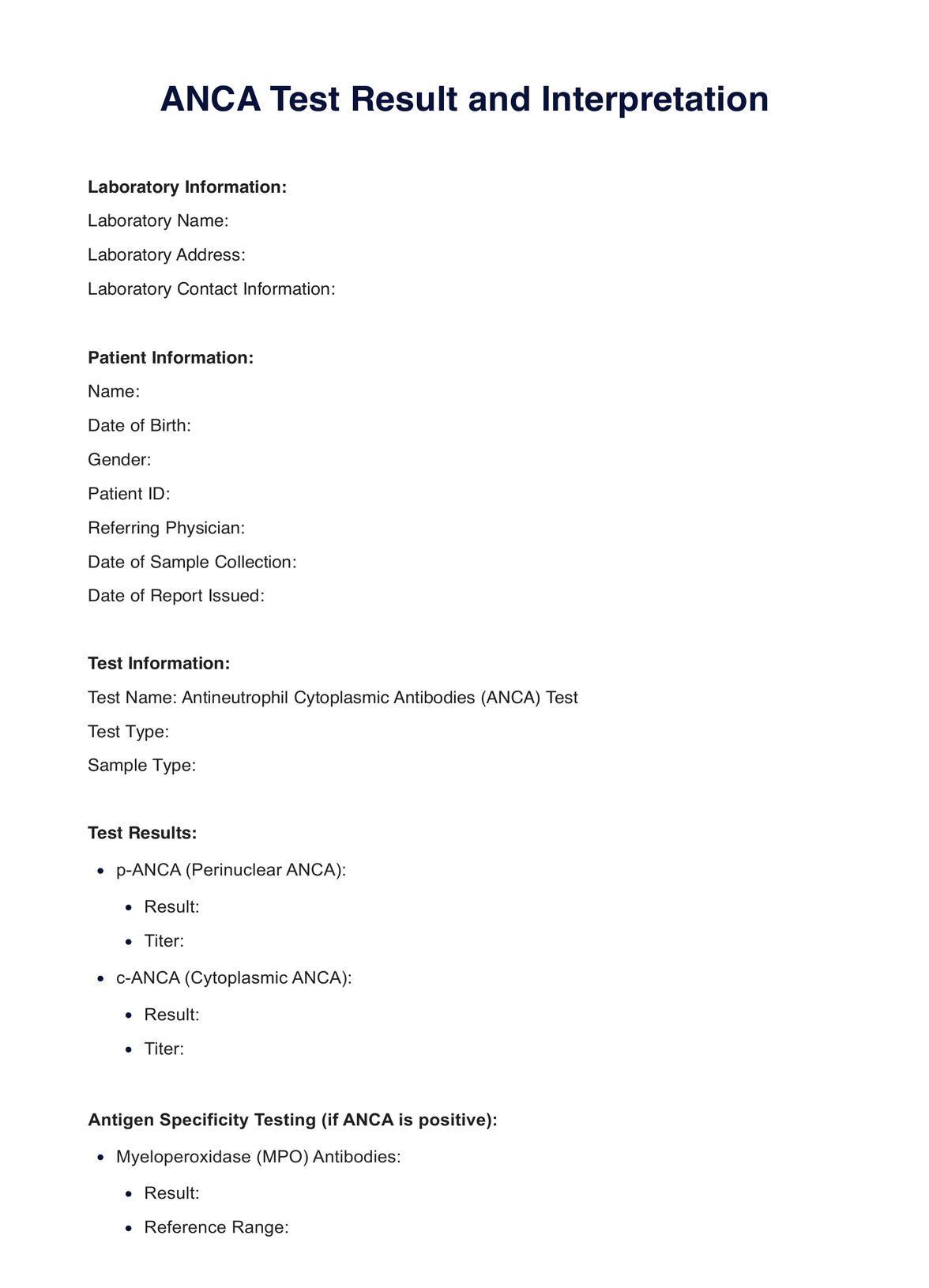Usually, rheumatologists or nephrologists request this test when they suspect an autoimmune disorder.

Antineutrophil Cytoplasmic Antibodies
Discover the importance of the Antineutrophil Cytoplasmic Antibodies Test in diagnosing autoimmune conditions. Learn how this reliable tool aids healthcare.
Use Template
Antineutrophil Cytoplasmic Antibodies Template
Commonly asked questions
These tests are used when a patient presents symptoms of an autoimmune disorder.
The tests detect ANCAs in the blood, indicating certain autoimmune conditions.
EHR and practice management software
Get started for free
*No credit card required
Free
$0/usd
Unlimited clients
Telehealth
1GB of storage
Client portal text
Automated billing and online payments











